As indoor plants take over our homes, here’s an expert guide to buying, styling and keeping them alive
Before you fill your home with the best indoor plants money can buy, it’s wise to do a bit of research to find out which plants are right for your home, what you need to do to keep them alive (dead plants don’t make the best décor!) and where to position them in your home.
Garden expert Meredith Kirton shares her top ten indoor plant varieties and care tips, to help you keep them alive and thriving, as well as styling tips to help your greenery look its best.
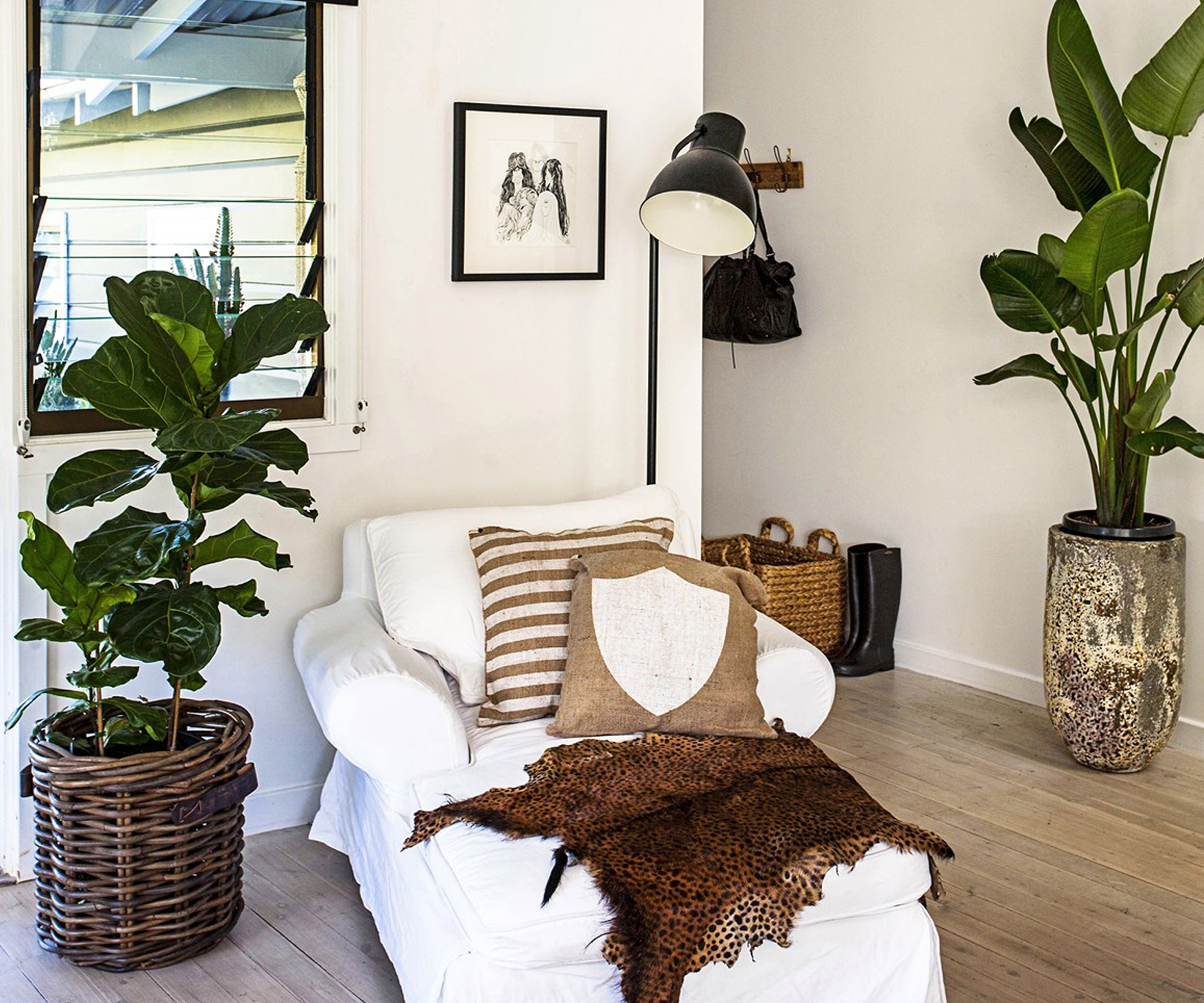
Tips for choosing an indoor plant
- Plants that can withstand living indoors generally hail from subtropical climates, so be sure to gradually acclimatise your plant to the individual climate of your home.
- Generally speaking, plants with dark green leaves photosynthesise better than those with light green or coloured leaves. This means they need less light to survive and are very shade tolerant. Coloured or patterned leaves tend to need more light.
- If your indoor plant requires bright, indirect light, pick a room that receives enough natural daylight to read a book by for most of the day.
- When buying a plant from a garden store or nursery, be sure to check the plant thoroughly for pest, insects or signs of general distress or lack of care. A healthy plant has strong leaves and a firm stem.
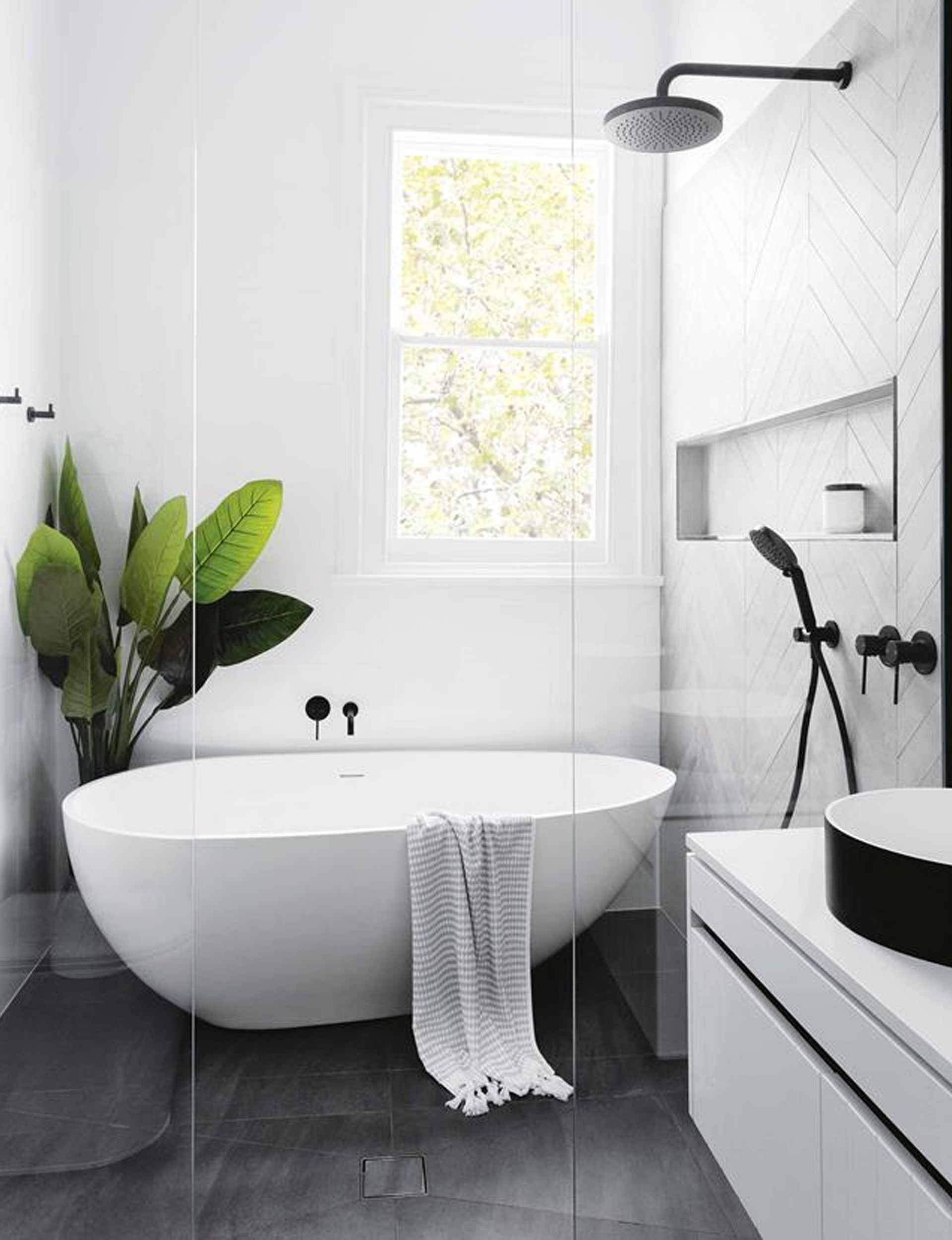
Top 10 indoor plants
1. Prayer plant
Calathea, so named because the leaves close together at night as if in prayer, has great foliage colours including reds, purples and stripes. It does best in a well-lit position, and once past its prime is great for shady gardens.
2. Kentia palm
Bring the tropics indoors with the Kentia palm (Howea forsteriana) – a good choice for areas with little sunlight. Other low-light survivors include Rhapsis, Peace lily and Never Never (Ctenanthe).
3. Devil’s ivy
Trailing plants such as Devil’s ivy (Epipremnum aureum) can be used to soften shelving. It’s one of the most hardy indoor plants as it requires little maintenance – be careful not to over-water! It’s happy to live in low-light, humid or sunny spots, but keep it out of reach of cats and dogs, as it is toxic to them.
4. Chinese evergreen
The go-anywhere Chinese evergreen (Aglaonema) will cope with almost anything, from air-conditioning in summer to heating in winter. It seems to adapt admirably to a wide range of positions indoors, and has handsome broad leaves with grey or white markings.
5. Zanzibar gem
Zamioculcas zamiifolia, also known as eternity plant, looks like a fern or cycad, but is as hardy as they come. Clean its leaves regularly and water sparingly, as it doesn’t like to sit in a puddle. It will cope in any well-lit spot.
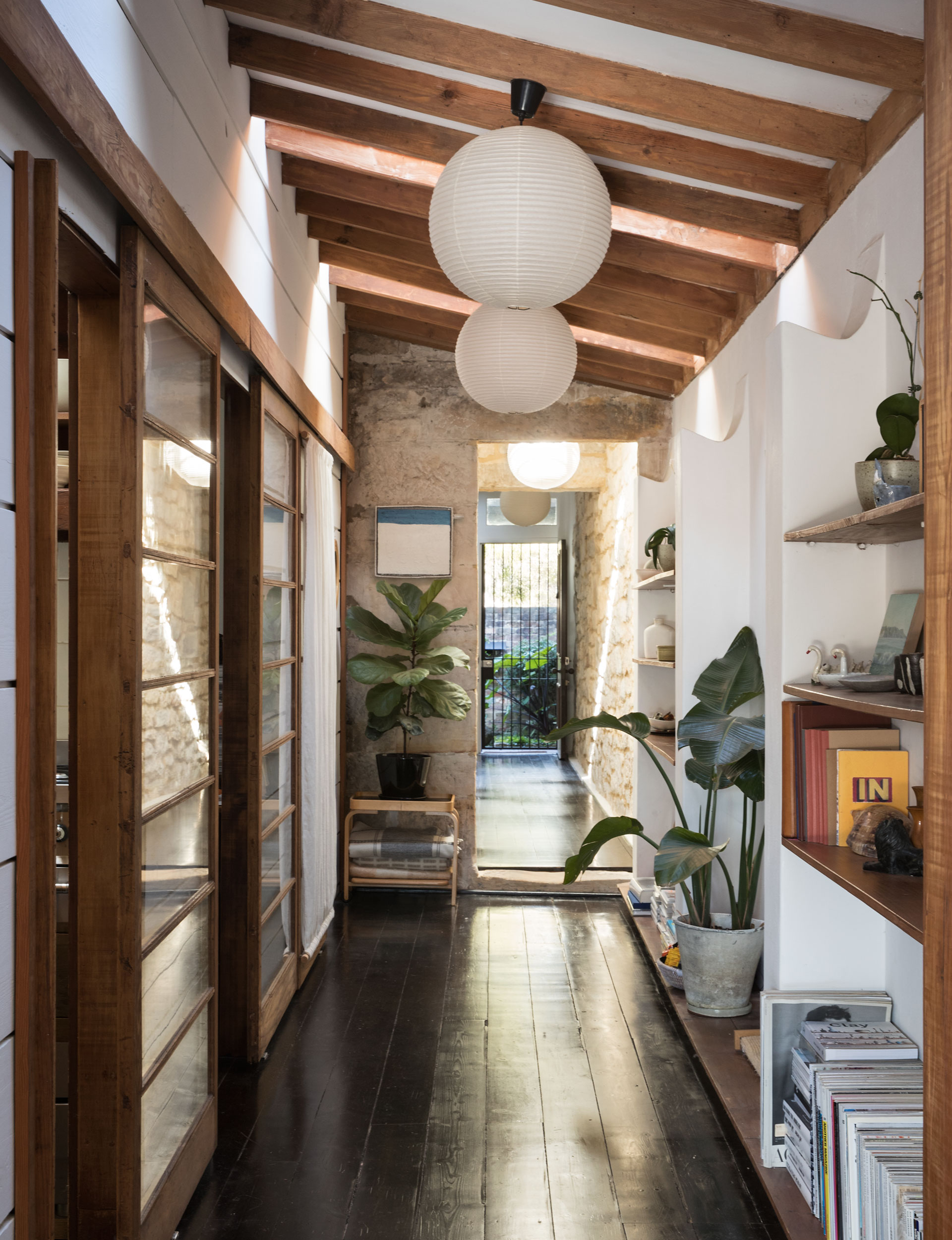
6. Rubber tree
Making a comeback from the 1970s is the rubber tree (Ficus elastica) especially the purple leafed form ‘Rubra’, which has deep burgundy leaves. Another interesting one to try is ‘Tricolour’ – a variegated form with cream and pink margins.
7. Moth orchid
Not strictly an indoor plant, this orchid flowers inside for months and can be kept outside in the shade until the next flowering. Orchids don’t like wet feet, so plant them in freely draining material like bark chips or orchid compost. Moth orchids like having their roots exposed to the light, so are often grown in transparent containers.
8. Monstera deliciosa
Monstera deliciosa – the ‘It Plant’ of 2019 – is native to tropical rainforests from southern Mexico to Panama so it comes as no surprise that it favours a warm, humid environment, making them ideal for indoors.
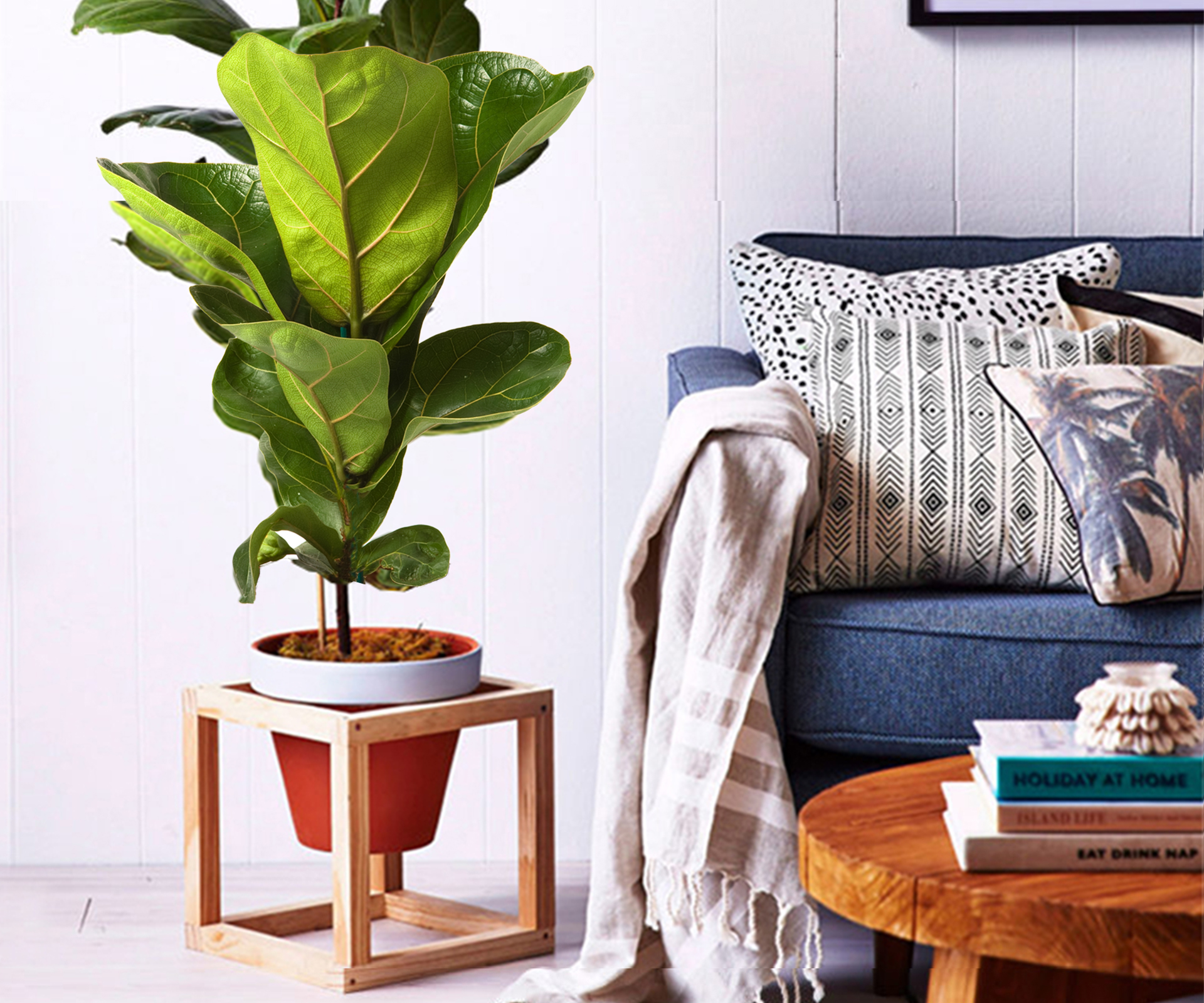
9. Fiddle leaf fig
The fiddle leaf fig (Ficus lyrata) is one of the most popular house plants right now due to its large leaves that make a dramatic statement in interiors. There is also a slightly smaller, more compact form, ‘Bambino’, which is also stunning.
10. Succulents
Succulents cope with full sun and air-conditioning, and are very much still an it-plant. They’re not really an indoor plant and benefit from time spent outside. Buy two and let them take turns outside, one fortnight at a time, to keep them in tiptop condition. Make sure they drain freely, as succulents and cactus are prone to rotting if you overwater them – once a week in summer and less in winter is all that’s required.
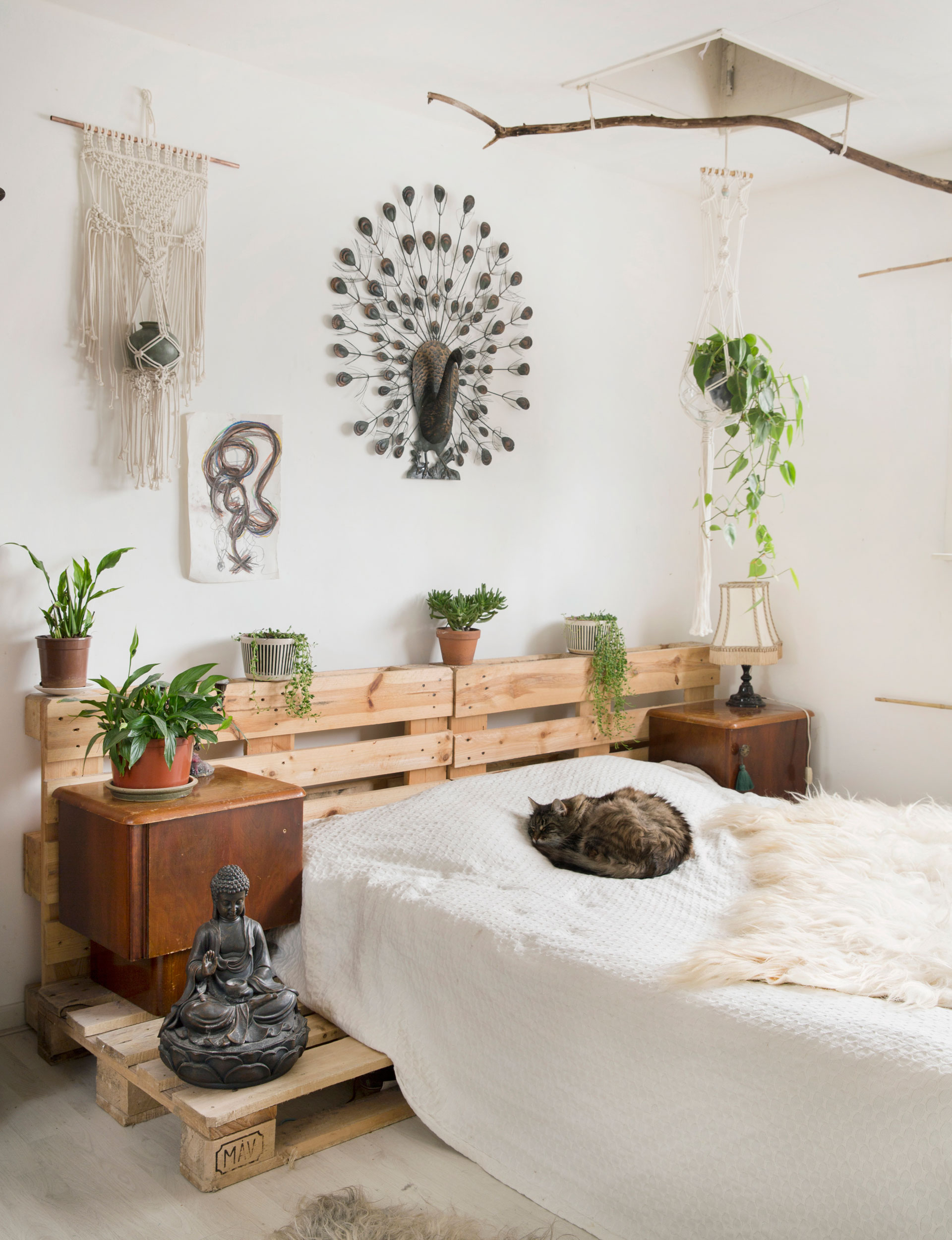
Which pot or planter?
The best pots and planters are those with drainage holes. Water can become sour and indoor plants can fail to thrive in pots that don’t drain well or allow roots to breathe. If you want to use a ceramic, metal or glass pot that doesn’t drain, use it as an outer pot and keep your plant in a plastic pot inside it and use a charcoal or moss layer at the base to soak up excess water and keep it clean. Some planters are made as self-watering or wicking pots, which are great if you’re forgetful or travel a lot.
Terrariums
Terrariums, which work like mini ecosystems, normally have a base layer of charcoal, then pebbles, then moss to help purify the water. They grow easily in a bright position, but it can be tricky to do any maintenance work, such as trimming old fronds. Consider how easy the plant will be to re-pot. Urn-shaped pots can be impossible to replant.
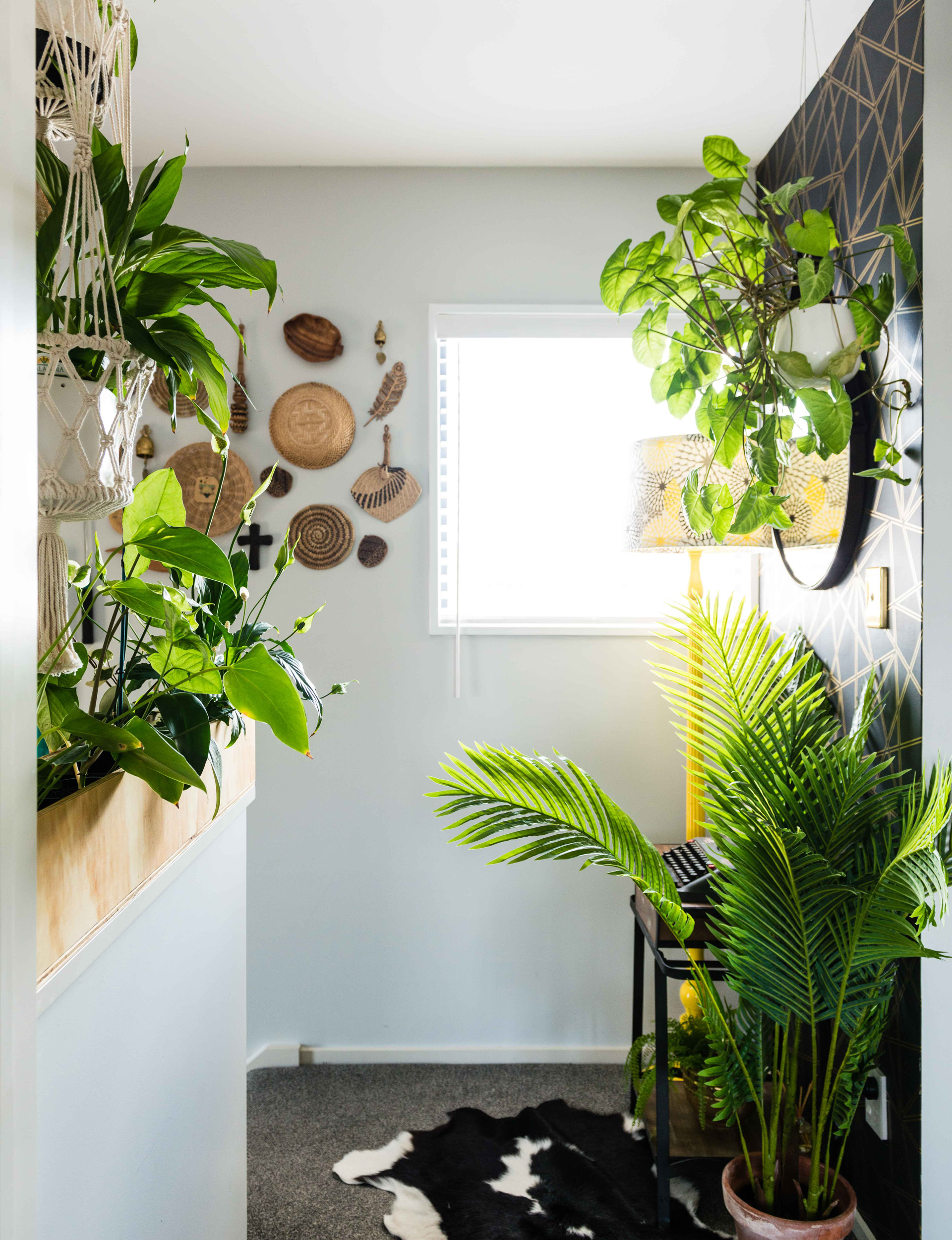
Maintenance of indoor plants
Pruning
Indoor plants generally don’t need to be pruned, though they benefit from removing dead leaves, brown fronds and, in the case of plants like Peace lilies and Anthuriums, old flowers. Occasionally pinching back the growth of bushier indoor plants, such as figs, will promote thicker growth. Some taller growing plants, such as Dracaenas (including Happy plants), can be trimmed down to size when they have outgrown their spot. They will then re-shoot from this incision. The cuttings easily grow roots, so you can make new plants by placing the cuttings in a vase, letting them grow roots and then planting them into a new pot with potting mix.
Feeding
To get the best from your indoor garden, remember to feed it. You can buy slow-release fertiliser especially made for indoor plants, which will gradually fertilise plants throughout the year. Supplementing this with added liquid plant tonic, such as Nitrosol, will promote luscious green growth. This is normally applied once every three weeks or so.
Watering
What a plant needs is specific to the species; however, hardy indoor plants usually need to be watered around once or twice a week in summer, and once every two weeks in winter. A good way to check if a plant needs water is to push your index finger into the top layer of soil up to the first joint, if the soil is dry it needs water. Try adding rocks or drainage material to the bottom of the pot. Brown tips suggest over or under watering.
Cleaning
Some homes can actually get pretty dusty inside, so when cleaning, don’t forget to wipe down the leaves of plants such as rubber trees and fiddle leaf figs, which can catch a lot of dirt. If your indoor plants are small enough to lift, pop them into the shower once a month under tepid water for 10 minutes – this does a great job of cleaning palms and ferns and simulates the rain. Let them drip-dry, then place back in their spot clean and refreshed. For a final shine, wipe the top surface of your fiddle leaf figs, rubber trees, palm fronds and Peace lilies with a cloth moistened slightly with white oil.
Replanting
August is the ideal time to freshen up indoor plants with a replant. Make sure you buy potting mix that has the Australian Premium Standard 5 ticks symbol on it. Here’s how to re-pot a plant:
- Remove your indoor plant from its pot and gently tease out or trim off any circling or matted roots.
- Either plant back into the same pot or, if you want your plant to continue to grow, plant it up a few sizes into a bigger pot.
- Make sure you don’t build up soil around the trunk or leave roots exposed – the new level needs to be exactly the same as the old one. Water the plant thoroughly so you remove any air pockets.
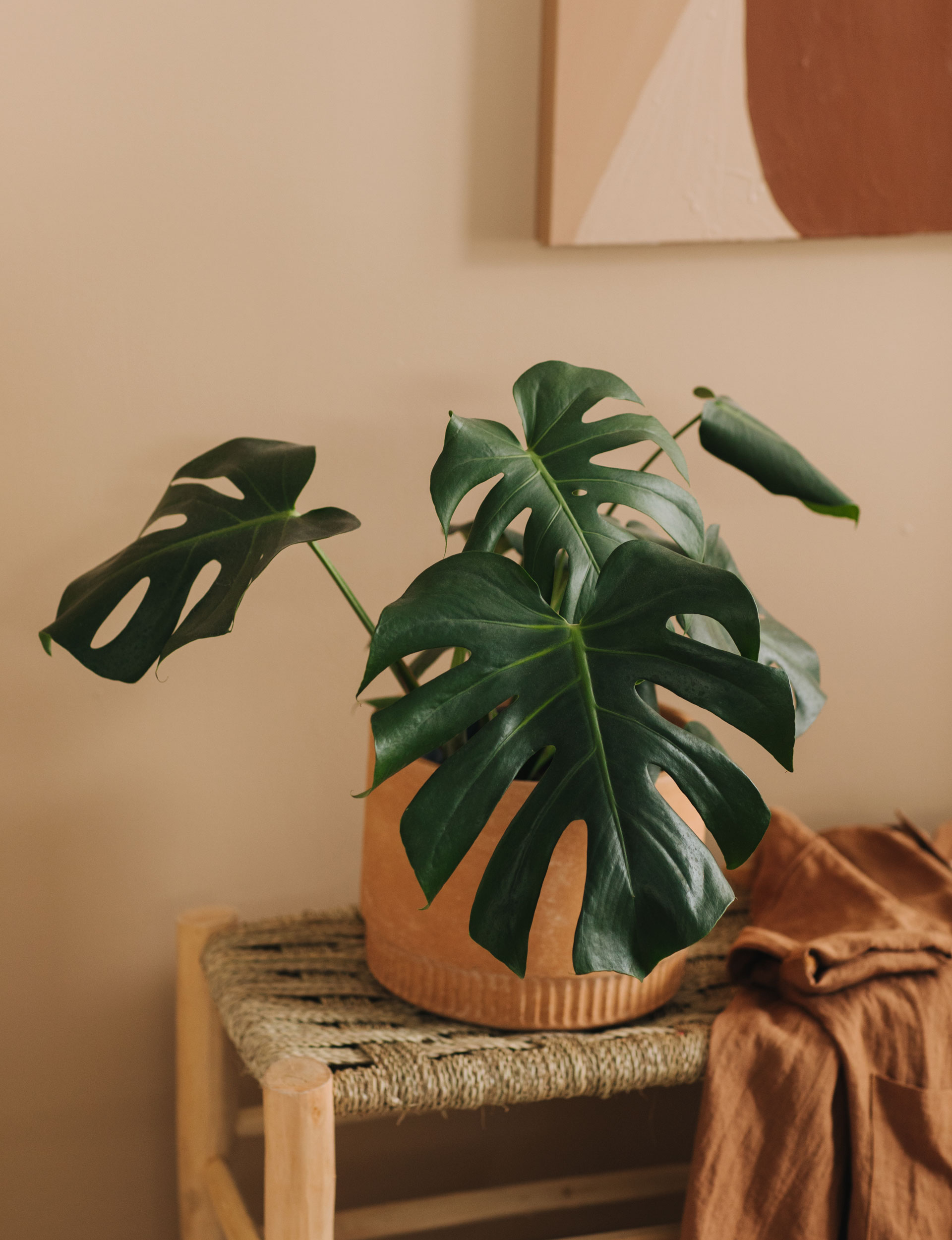
How to style your indoor plants
1. Group them together
Gather a posse of plants of varying heights in different pots to create a display with real impact. We love how great the greens in the soft furnishings look with the plants, too.
2. Use a wall
You can buy these staghorn ferns ready to mount at your local nursery. They almost look like pieces of art on the wall! Just remember to give these beauties regular spells outside.
3. Hang them high
Create a sculptural display above with bird’s nest ferns and trailing plants such as the succulent String of Pearls and the carefree Devil’s ivy – perfect choices for hanging pots.
4. Nature’s Furniture
Tall plants, such as this fiddle leaf fig, look very stylish and dramatic when placed into pots sitting in metal or timber stands. You could even make something like this yourself.
This article originally appeared on Homes to Love Australia.
Photography by: Guy Frederick, Simon Devitt,
EXPERT PROJECTS

Create the home of your dreams with Shop Your Home and Garden
SHOP NOW











